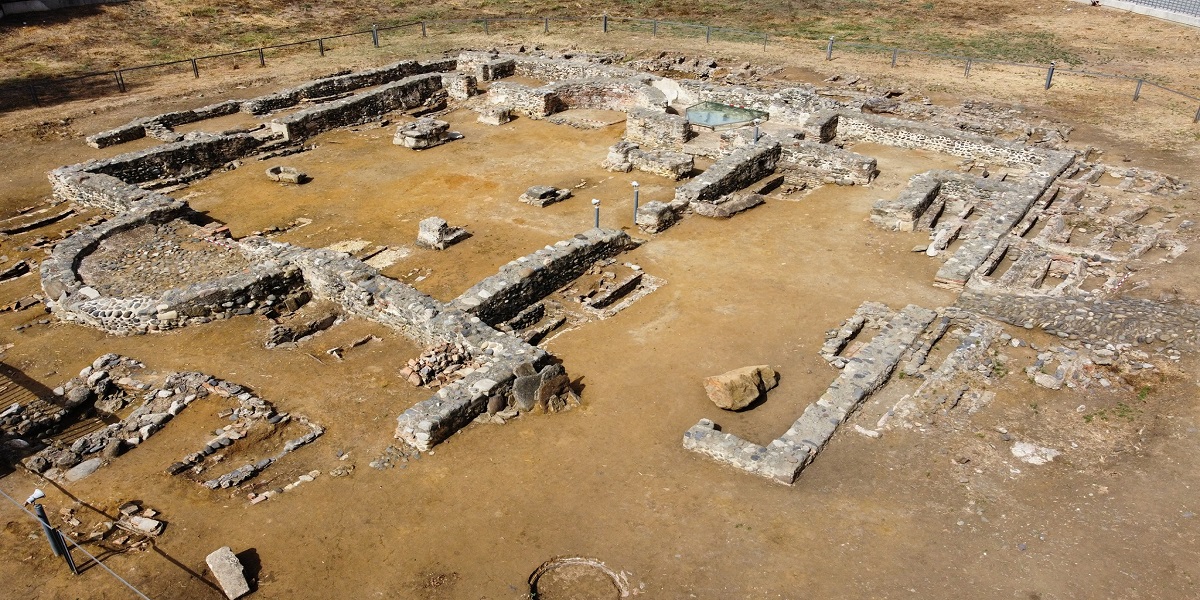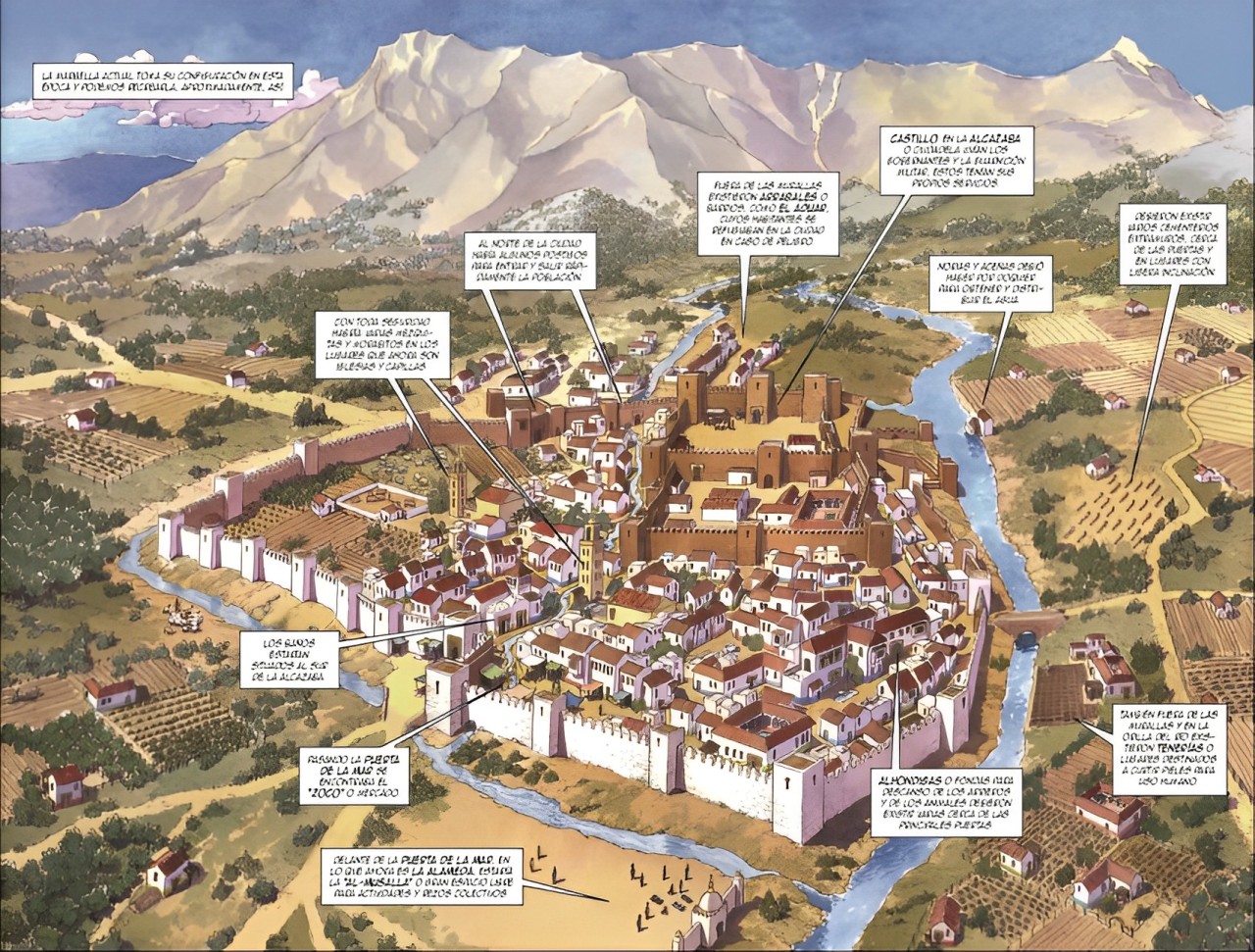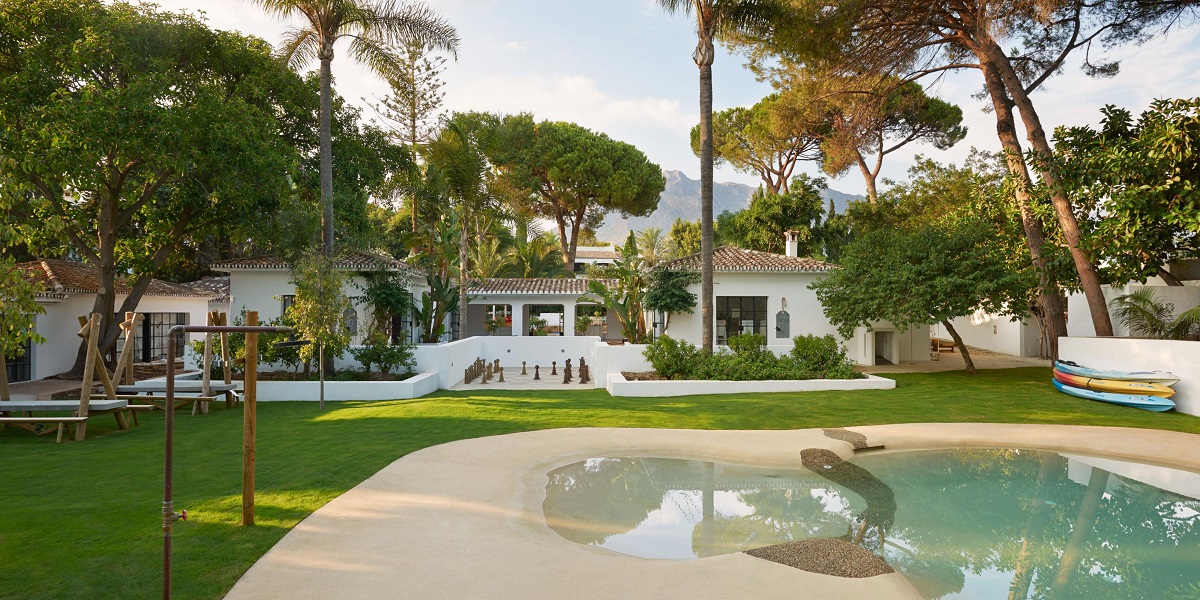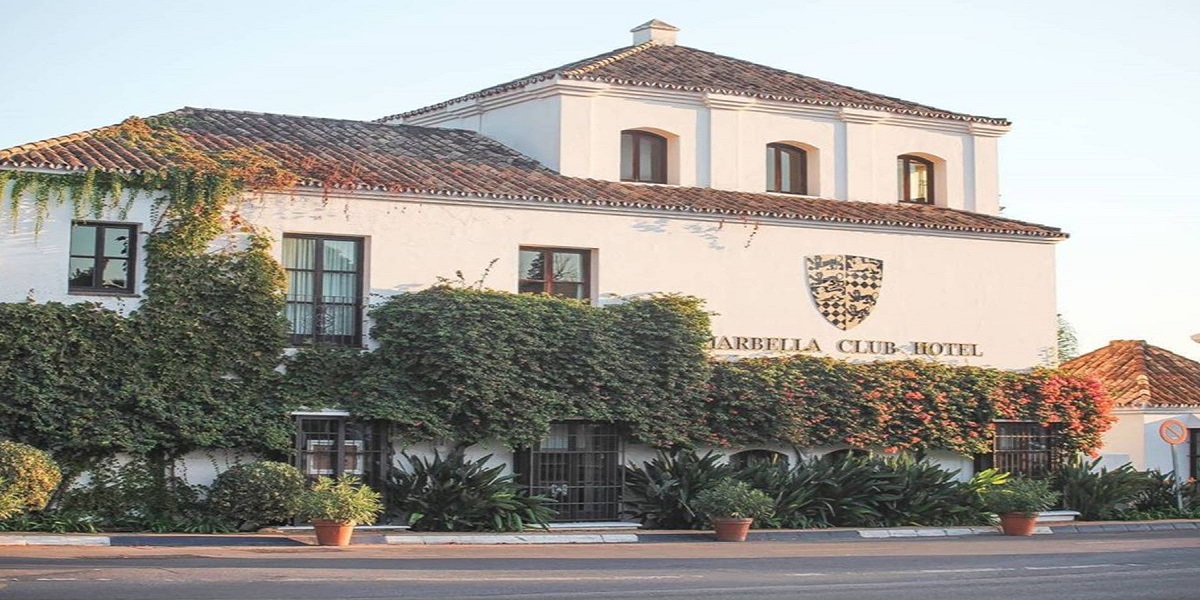History of Marbella.
Famed for its bustling, cosmopolitan social scene, summer parties and a full calendar of spectacular events, culture, entertainment and luxury mega mansion Marbella was very different in the past. The first traces of human settlements in the area date back thousands of years. How Did All Start?
Some historians believe that Marbella was inhabited as early as the 7th century BC, while the Roman settlers are thought to have been in what is now Marbella Old Town.
Marbella wasn’t built in a day.
The nowdays world wide known jet set resort town has remains dating back to just about every period of history and new ones frequently come to light during construction works.
Marbella boasts numerous historical landmarks that are worth exploring. San Pedro de Alcántara, for example, has various ruins strewn throughout the town, including Las Termas Romanas de las Bóvedas (The Vaults), Baslica Paleocristiana de Vega del Mar (old Christian basilica), and Torre Almendra del Bóvedas (ancient beacon tower). Additionally, the central area of Marbella contains remnants of the old Moorish civilization that have managed to withstand the test of time.

Marbella has a unique history that has been shaped by the various civilizations that have occupied it over time. It was called “Marbal-la” during the reign of the Arabs and was protected by a castle with watchtowers. In 1485, The Spanish Reconquista saw the city handed over to its traditional Christian rulers.

But long before all this, the city was populated by Phoenicians and Romans, as evidenced by burial sites and the well-preserved old Roman baths.
Roman ruins in Marbella.
When you think of Marbella, the first thing that comes to mind isn’t ancient history, much less when you’re thinking about the beach. Indeed, this entire region is for rest, relaxation, and modern-day hedonism. But, the southern coast of Andalucia boasts one of Europe’s finest histories.
Cádiz is an hour and a half west of Marbella, founded by the Phoenicians, and is considered Europe’s oldest city. With many of history’s significant moments taking place there. Among these was the Battle of Monda, in which Julius Caesar defeated Pompey’s sons. Hannibal’s rallying of his troops on the way to Rome during the Punic Wars.

With this in mind, it’s not surprising to learn that near the San Pedro beach are some of the best-preserved late Roman ruins this side of Spain, a rare historic gem in the middle of the modern world. The ruins uncovered when a swamp drained in the early 1920s include a Roman house and an earlier Byzantine basilica. The villa is a magnificent example of a luxury Roman merchant’s home with latrines, underfloor heating, and a private spa, sheltered by a stand of eucalyptus a few meters behind the shore.

The house, whose floor plan and mosaic tiles are still visible, was on the outskirts of an affluent seaside hamlet dedicated to producing garum, a Roman delicacy prepared from fish paste. The minor 6th-century basilica, the most excellent preserved example in Europe, is newer (by around 200 years). As the Roman Empire started to fall apart, southern Spain became part of the Eastern Roman Empire, also called the Byzantine Empire. Its capital was Constantinople, which is now called Istanbul.

Another rare thing is the preserved baptismal, the only one of its kind in Europe. Before the tides of time, generations of people from the past sealed the small church away for centuries. The location was cleared up, marked, and promoted as a historic Marbella heritage by a group of neighbours a few years ago. Though this serene spot is still unknown to tourists and many locals.
Arab Influence.
During the muslin rule in Spain, the town was known as “Marbilla” and remnants of this heritage can still be seen in the architecture and and layout of the old town. The arab castle walls and ruins serve as a remember of Marbella arab past.
Moorish Architecture.
Andalusia’s culture and architecture draw heavily from Moorish influence, as the Moors inhabited this region for over eight centuries. It’s accurate to state that the legacy of the Moors molded a significant part of the Costa del Sol.
Moorish architecture blends Islamic design elements, iconic horseshoe arches, intricate telework featuring geometric patterns, and a strong focus on courtyards adorned with fountains. The ornate decoration is a hallmark of this style, floral motifs, characterized by rituals, and Arabic calligraphy as recurring elements.
The recent history behind our beautiful Marbella.
Marbella’s first hotels, like Hotel Comercial and Hotel Miramar, were built in the 20th century. This made Marbella a popular place for famous people, like José Banus, to visit for work and leisure.

A long time ago, before Hotel El Fuerte came into existence, sugar cane was grown in the area, and the Fort of San Luis was built. Later, a farming community emerged, which grew into the town of San Pedro de Alcantara that we know today.

Marbella was reduced to a small village after experiencing serious damage in the Spanish Civil war. But it started bouncing back when Alfonso Hohenlohe chose to make it his home after his father, Prince Maximilian von Hohenlohe and the Marquis of Ivanrey, Ricardo Soriano were charmed by La Concha Mountain during their visit in 1946, a year earlier. He bought lands, built a home for his family, and welcomed his friends from the Thyssen and Rothschild families to join him by selling them plots of land.
The square was built after the Christian reconquest in 1485.
After the Spanish Civil War Marbella was a town with less than 10,000 inhabitants.

Mining Industry.
Though it may seem surprising given the city’s current status as a popular tourist destination, during the 20 century, the industry of iron ore mining rose to become a profitable enterprise in Marbella, with Sierra Blanca being one of the primary mining areas, and to transport the ore from the mountains to a small dock on Marbella’s eastern side, a cable line was constructed, and the dock’s main structure can still be observed in the sea today.
Marbella Club Hotel.
This story may sound more like a fairy tale to the reader than a simple explanation of the Marbella Club‘s beginnings, yet it is precisely how it all began.
Prince Alfonso Hohenlohe.
A lovely small pinewood on the outskirts of a large olive grove, providing shade to delicious vineyards, 3 miles west of the historic fortified town of Marbella, overlooking Gibraltar with the “Columns of Hercules,” where Classical Antiquity believed the world ended, made young Prince Alfonso Hohenlohe fall in love with this “sleeping beauty” in 1944.
Finca Santa Margarita.
The unusual microclimate, the marvelous light, the exquisite perfume of the air, the dark blue sea full of fish, pristine beaches and, last but not least, the kind nature and friendliness of the local people captivated the Prince to such an extent that he decided to change his vacation plans and begin negotiations to purchase the Finca Santa Margarita, the property on which he and his father had entered for a swim and picnic lunch, and where The Marbella Club is nowdays located.

After constructing his home in the beautiful pinewood, he converted the abandoned farmhouse into a meeting place for the new immigrants, naming it the Marbella Club. It quickly became his ardent determination to preserve this “Garden of Eden” for posterity and spread their discovery throughout the world, fourteen years before the opening of Puerto Banus has also been at the very heart of the growth of “quality tourism” in Marbella.
Elegant Simplicity.
With his style of “elegant simplicity,” he soon erected twenty basic but attractive rooms to accommodate not only transit tourists frantically seeking overnight housing but also all those friends he had convinced to visit Marbella with his enthusiastic descriptions of his “Paradise on Earth”.
Telephone.
However, the often-blamed archaic telecommunications service aided the new Club’s popularity! Because the hotel possessed one of the few telephones in Marbella, neighbors from all over came to the Club to make phone calls and enjoy the other amenities while they waited for their connections. You had to rely on the goodwill and efficiency of the operator to connect you to the line as soon as one became available. While waiting for the connection, the customer had plenty of time to swim, play tennis, have lunch or even play a game of bridge, which generated a joyful environment at the Club – plus more cash!
A double room with an entire board costs 285 Ptas.
Per person per night, or roughly €1.70! It would be incorrect to claim that celebrities, film stars, nobles and politicians only occupied the hotel. If that had been the case, the hotel would have been destroyed in no time! No, there were so many loyal transit visitors who happened upon the Marbella Club by chance when looking for overnight accommodation on their way from Morocco back to France or from Portugal to Granada… They were enchanted to discover such a delightful, clean “Motel” amidst gorgeous gardens, so some remained an extra night, returned the next time for two or three weeks, and indeed told their friends about their incredible discovery – so the news spread by word of mouth (extract from Panorama Real Estate website).
Celebrities and Aristocrats.
But, without a doubt, the best Ambassador was Prince Alfonso, who enthusiastically told everyone about his lovely hotel throughout his continual excursions across the world. It is not surprising, then, that illustrious members of the European Aristocracy such as the Fürstenbergs, Bismarcks, Metternichs, and Archdukes of Austria, Scandinavian royalty and exiled kings, as well as famous Hollywood stars such as James Stewart, Ava Gardner,.. and beautiful Audrey Hepburn with her husband Mel Ferrer; bankers such as the Rothschilds and Oppenheim’s industrialists stayed in the hotel.

The inhabitants of Marbella couldn’t believe their eyes when they saw celebrities they had only seen on movie screens or in popular publications walking down their little streets.
Count Rudi.
As the Prince’s cousin and a graduate of the Swiss Hotel Management School in Lausanne, Prince Alfonso persuaded Count Rudi to come to Marbella in 1956 and offered him new management practices and high-standard, individualized service to the Marbella Club. It was a difficult challenge to meet the expectations of all those distinguished guests, who were accustomed to traveling from one castle to another in a very plain but attractive hotel. However, by professional knowledge, diplomacy and aristocratic flair, they were able to transform that little “Country Inn” into one of Europe’s Top Hotels, a member of the Leading Hotels of the World and Relais et Châteaux. The worldwide globetrotters quickly considered a stay at the Marbella Club a “must” since they knew how to blend the particular Club environment with interesting weekly parties and excellent service.

Count Rudi and Princess Marie Louise, great-granddaughter of Germany’s last Emperor, and was given many distinctions for his contributions to the city of Marbella, even there is an avenue named after him in Marbella.
Marbella Club Beach Club.
Amusing, regular Tuesday informal dress dinners at the Beach Club, which we pompously called “gala dinners,” encouraging guests to come elegantly dressed but without a tie, added an extraordinary flair to the ordinarily casual atmosphere and gave us evenings to remember, like the night the Duke and Duchess of Windsor tried to follow our dress code, very much against the Duke’s everyday habits of always wearing a tie, even in summer.



When the visitors were told of the presence of such a distinguished guest, they decided to discard their elegant informal attire and all the men arrived wearing jackets and ties! The Duke walked into the Beach Club wearing a Hawaiian shirt with an open collar! The Duke flushed and left without the other guests seeing, only to return moments later elegantly clothed in a dinner jacket.

What a surprise for all the other guests, who had relaxed and taken off their ties in the meantime, to be met with this new controversy! Only a magnificent man like the Duke of Windsor could fix the problem by removing his bow tie and throwing it into the pool!




Devoted to work, the Prince and Count Rudi made a perfect partnership, combining their talents and global contacts to construct one of the world’s most iconic hotels. They were able to persuade friends to invest in Marbella, resulting in the creation of luxury complexes and residential neighborhoods with golf courses, marinas and polo fields. It was always our intention to keep the style of this “little oasis” style free of high-rise structures and overpopulation and maintain a garden city where traditional local charm and global style and elegance merged seamlessly.
Los Monteros.
Throughout the 1960s and 1970s, the city continued to develop as a luxury destination, attracting European elites and major international figures from the film and political sectors, further consolidating its reputation as an exclusive place to live and vacation. In the 1960s, the area of Los Monteros was developed, attracting high-level buyers due to its beautiful beaches, tranquillity, and easy access to the town center.
Puerto Banus.
At the same time that Marbella was undergoing a spectacular boom as a tourist destination, José Banús, a local property developer from Madrid, bought a large estate designed for breeding bullfighting cattle, in the area now known as Nueva Andalucia.



In 1966 Prince Alfonso Hohenlohe introduced José Banús, to two architects, Marcos Sainz and Noldi Schreck, who had helped design and build Beverley Hills, and who had both been hired to design the Hotel Marbella Club in a mediterranean style.
Jose Banus developed an idea to provide Marbella’s international elite with a glamorous exclusive marina where they could shy away from prying eyes. The world wide known port was inagurated in 1970 by Banús, as a luxury marina, in a lavish ceremony where a young Julio Iglesias song for 1,700 guests, including: Prince Rainiero and Princess Grace of Monaco, film director Roman Polanski and Playboy founder Hugh Hefner.









Marbella ad New York Times 1.984
The port now houses some 900 boats including a number of luxury super yachts belonging to the world’s wealthiest people and has become one of the largest entertainment centres in the Costa del Sol, with 5 million annual visitors, and is popular with international celebrities.
Arab Sheikh.
The entrance of Crown King Fahd and his brother, Prince Salman, from Saudi Arabia in the late 1970s provided invaluable backing for our philosophy: opulent palaces buried in extensive gardens providing comfort and seclusion. Soon after, other potentates and affluent businesspeople from the Emirates who treasured the company of the Saudi Royal Family followed them. They brought desperately needed petrodollars into post-Franco Spain and validated our conviction that our effort to save the lovely resort for future generations would not be in vain.

Unfortunately, these springtime sensations were quickly buried by an unsympathetic municipal administration from 1977 to 1991, leading to Marbella’s darkest historical period. In addition to this disastrous circumstance, Prince Alfonso’s Saudi partner died and left his shares in the hands of his descendants, who had no other interest than selling the hotel for the highest possible price in the shortest amount of time.
David Shamoon.
All seemed lost until a lucky star appeared on the horizon in the form of David Shamoon, owner of one of the perfect beachfront homes in the Marbella Club’s residential zone, “Santa Margarita,” who realized that if nobody took the initiative to save the flagship, the Marbella Club, all his investments and the glory of Marbella would vanish.

In the photo, David and Veronica Shamoon with Chris and Kirsten Clover (Panorama real estate owners) and friends.
He persuaded a few friends to buy the Club’s shares with him. He invested much in the hotel to restore its former grandeur, renovating and modernizing all facilities and the restaurant to super standards while retaining its unique charm and personalized service. He persuaded Count Rudi to return to the Club to assist him in achieving this goal and partially regaining the famed clientele. And they were successful in this critical move, which helped restore the Marbella Club, and thereby the entire city of Marbella, to its former glory.
Puente Romano Hotel
Suppose you’re seeking a little luxury while in Marbella. You’ve come to the perfect place, the Hotel Puente Romano is a five-star Grand Lux Leading Hotel of the World located directly on the beach and named after a roman bridge. The hotel features three swimming pools, tennis club, many other first-rate amenities, and up to six different restaurants. It even has its exclusive nightclub, Suite. Even without the various exquisite restaurants within the hotel, world-renowned double-Michelin-starred chef Dani Garcia operates incredible eateries beneath the hotel reception.
The Background.
Tulio Pino, a well-known Sevillano property developer, created the project in 1976-1977 to look like an Andalusian town, complete with whitewashed houses, tiled roofs, attractive cobbled plazas and vividly colored flowers. As a result, the hotel currently has a wide area of low-rise luxury rooms stretched across both sides of extensive, sub-tropical gardens that flow to the sea.

The hotel includes 287 “keys,” the majority of which are big studios or one-bedroom suites of the same size. 61 properties were sold for private usage during its first two years, 1976-1978. The remaining units were then sold “en bloc” in 1978 to Syrian-Saudi billionaire Mouffak Al Midani, who founded the Hotel Puente Romano and opened in 1979, along with the premier tennis club in Marbella, located close to the hotel and led to many years by Bjorn Borg.

David Shamoon.
Later, in 1995, David Shamoon, a well-known London businessman, purchased the hotel that is still in the hands of his skilled children, Daniel and Jennica, who have completed significant modifications and refurbishments throughout the years.
Landing property in this sought-after neighborhood is easier said than done. Some privately held apartments do, however, come on the market from time to time. You must move fast when they become available, as they are usually scooped up within a week or two.

If you obtain a property within the hotel, you can take advantage of the 5-star services and facilities. Oh, and the sandy beaches are only two or three minutes away. Community fees and maintenance expenditures are eliminated thanks to a notarized agreement between the hotel and the private owners.
Jesus Gil, the person behind Marbella’s uplift.
In 1991, Gil shot to fame for his charming mission to make Marbella shine on the global stage. As mayor, He brought new life to the city with his campaign, fixing old structures, constructing new ones, enhancing public services, and creating lovely landscapes. All of this hard work paid off, as Gil attracted many investors to Marbella.

Marbella’s former mayor was quite a character. He was known for his role as chairman of Atlético Madrid football club and for his tough personality and conservative views, sparking conflicting views among the people. However, his hard work and love for enhancing Marbella’s charm earned him three consecutive terms in office. In the late 1990s, Marbella flourished under his leadership.
Regrettably, Jesus Gil alleged corrupt practices also caused harm to the area.
A popular destination for the wealthy.
Marbella is a little paradise on earth, those who come here know this to be true. An amazing place that has undergone a fantastic transformation in the last decades.

With its stunning beaches, gorgeous mountains, and lovely climate, it’s no wonder why so many famous and wealthy people are drawn to this luxury destination. You think about one celebrity, he or she has a home in Marbella or spend holidays in this wonderful jet set 5-stars resort.
Looking for an investment in Marbella?
Due to its vibrant culture, stunning location, privacy, and top-notch properties, Marbella has become a highly sought-after destination for foreign investors. As the hottest spot in Spain for property sales, Marbella offers many amazing areas with unique charm.

However, making a wise investment requires more than just a passing interest. You need to be informed and stay ahead of the game. That’s why it’s wise to seek advice from a local expert who knows the area well and can provide tips on making a smart investment. To learn more, consider speaking to one of our brokers for personalized advice. With their expertise, you’ll be well on your way to a successful real estate investment in Marbella.
Marbella Luxury Properties.
If you’re interested in investing in Marbella’s luxury real estate, you’ve come to the right place! With the best Selection of luxury properties for sale in Marbella, Spain. There are many people saying that Investment in Spanish luxury Real Estate remains profitable. One of the markets in which this is echoed perfectly is Marbella, Malaga, where a considerable growth in the number of transactions involving luxury properties has been noticed.
Best Real Estate Agency Marbella.
LuxuryForSale.Properties is the premier real estate agency in Marbella. With over 2 decades of expertise, a global presence, and an unwavering commitment to client satisfaction, We set the standard for luxury living in this vibrant coastal city.
Our agents will provide you with all the knowledge you need and prepares you to make a safe and sound property investment in Marbella. A satisfied customer is at the heart of our business, and good customer service is our most important value. We sell beautiful properties in areas such as: Marbella Golden Mile, Puerto Banus, Nueva Andalucia, Guadalmina Baja, La Zagaleta, Sierra Blanca, Cascada de Camojan, Nagueles, El Madronal, Marbella Club Golf Resort, el Paraiso Alto, Los Flamingos, La Quinta, Los Monteros, Sotogrande,..

Exceptional services from Us to you!
Our team at LuxuryForSale.Properties real estate will love to show you around and introduce you to the must-see spots if you’re considering buying a property in Marbella.

Our advisors will help you in finding the property (Villa, Apartment, Townhouse,..) of your dreams. We boast a wide network of direct sellers, builders and other well known brokers. New listings every week. No buyer commission costs. 24/7 customer service.

Please, Contact Us and we will help you to find your exclusive property in Marbella.
































